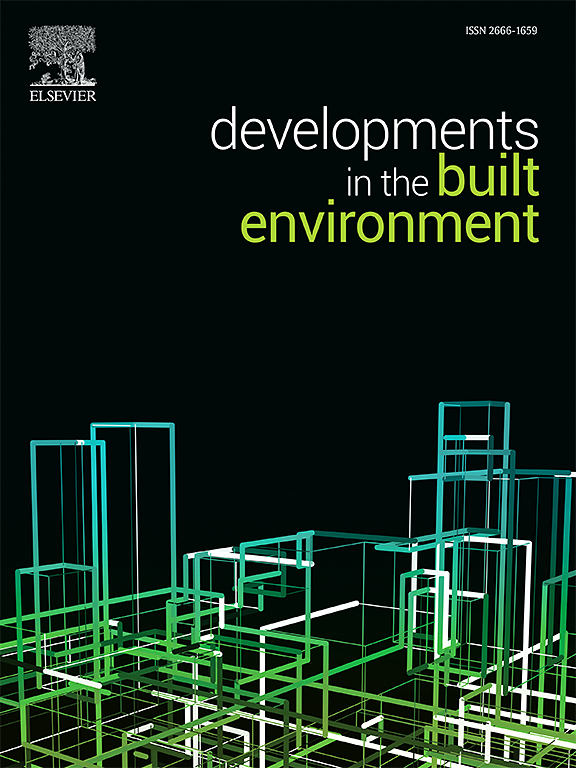减少热气候下建筑围护结构热性能估算不确定性的实验方法
IF 6.2
2区 工程技术
Q1 CONSTRUCTION & BUILDING TECHNOLOGY
引用次数: 0
摘要
本研究旨在减少热干旱区建筑能源需求估算中冷负荷温差CLTD和u值关键热性能参数的不确定性。采用了一种结合实验和数学方法的先进方法。引入了一种耦合实验方法(QIRT/THM),并对其进行了改进,以提高结果的准确性。实验方法与标准数据估计的相关系数高达93%。尽管相关性很高,但使用表格数据和实验值估计的冷负荷具有高达36%的电位差。提出了一种修正方程,以缩小具体情况下的计算差距。这些发现可能对通过标准化建筑物的热性能来减少不确定性具有重大意义。认识到建筑围护结构的重大影响,研究结果有助于更准确的估计,在缩小炎热气候地区的能源绩效差距方面发挥重要作用。本文章由计算机程序翻译,如有差异,请以英文原文为准。

Experimental approach to reduce uncertainty in estimating the thermal performance of buildings’ envelopes in hot climates
This study aims to reduce uncertainty in key thermal performance parameters of Cooling Load Temperature Difference CLTD and U-values used to estimate the energy demand of buildings in hot arid regions. A developed methodology that combines experimental and mathematical approaches is employed. A coupled experimental approach (QIRT/THM) is introduced with modifications to improve the results accuracy. The experimental approach achieved up to 93% correlation coefficient with the standard data estimation. Despite the high correlation, estimated cooling loads using tabular data and the experimental values, hold a potential difference of up to 36%. A correction equation was suggested to narrow the calculations gap under specific context. These findings could have substantial implications for reducing uncertainty by standardizing the thermal performance of buildings. Recognizing the substantial impact of building envelopes, the findings contribute to more accurate estimations which play a significant role in narrowing the Energy Performance Gap in hot climate regions.
求助全文
通过发布文献求助,成功后即可免费获取论文全文。
去求助
来源期刊

Developments in the Built Environment
Multiple-
CiteScore
7.40
自引率
1.20%
发文量
31
审稿时长
22 days
期刊介绍:
Developments in the Built Environment (DIBE) is a recently established peer-reviewed gold open access journal, ensuring that all accepted articles are permanently and freely accessible. Focused on civil engineering and the built environment, DIBE publishes original papers and short communications. Encompassing topics such as construction materials and building sustainability, the journal adopts a holistic approach with the aim of benefiting the community.
 求助内容:
求助内容: 应助结果提醒方式:
应助结果提醒方式:


